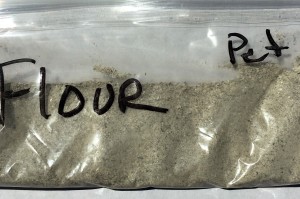Oyster Shell: Oyster Shell calcium promotes deep, strong and healthy root growth. It also protects and strengthens your plants against fungus, bacteria, and insects attacks. Oyster shell provides the perfect environment for your beneficial organisms, allowing them to thrive and keep soil pathogens (particularly root pathogens) and nematodes in check.
Oyster shell calcium improves soil texture. It helps break up and conditions clay and adobe soils, loosens packed soils, improves water penetration and aeration, and reduces waste water runoff.
The key to oyster shell calcium’s values lies in it’s availability around the root hairs of the plant. This is because calcium is responsible for carrying all other fertilizer ingredients into the plant. In other words; nitrogen, phosphorous, potassium and other nutrients ride in on the back of calcium, which is saturated around the roots of the plant. If enough calcium is not present, your plant will not get the full value of the fertilizer being used. Soils with calcium saturation levels of less than 65% have very poor nitrogen utilization.
Oyster shell calcium as a buffer against acidity. Over acidic soil means problems for soil bacteria and the plant suffers. Soils become more acidic as calcium is leached from topsoil into subsoil from watering and rains. Growing plants take calcium and other nutrients from the soil making the soil more acidic. Soils also become acidic from the use of nitrogen fertilizers. Oyster shell calcium neutralizes all this acid buildup and helps maintain the pH between 6.2 and 6.8 (the most favorable range for biological activity).
Oyster Shell Analysis: Calcium Carbonate: min. 96%, Calcium: min. 36%
It’s always best to consult your soil analysis to determine the specific needs of your soil. If unavailable, spread according to the following rates:
Pasture, Grass, Grain – 100 lbs. per 100 square feet
Orchard, Vineyard – 1 lb per 1″ of trunk, spread from trunk to drip line
Vegetables, Flowers – 4-5 lbs per 20′ row
Pots – 1 heaping tablespoon per 6″ pot
Compost – 10 lbs per cubic yard or 1-2 lbs per wheelbarrow load.
Water in, using normal irrigation practices.
- Grow
- Lay
- Cage
- Flour
- Bulk Flour






